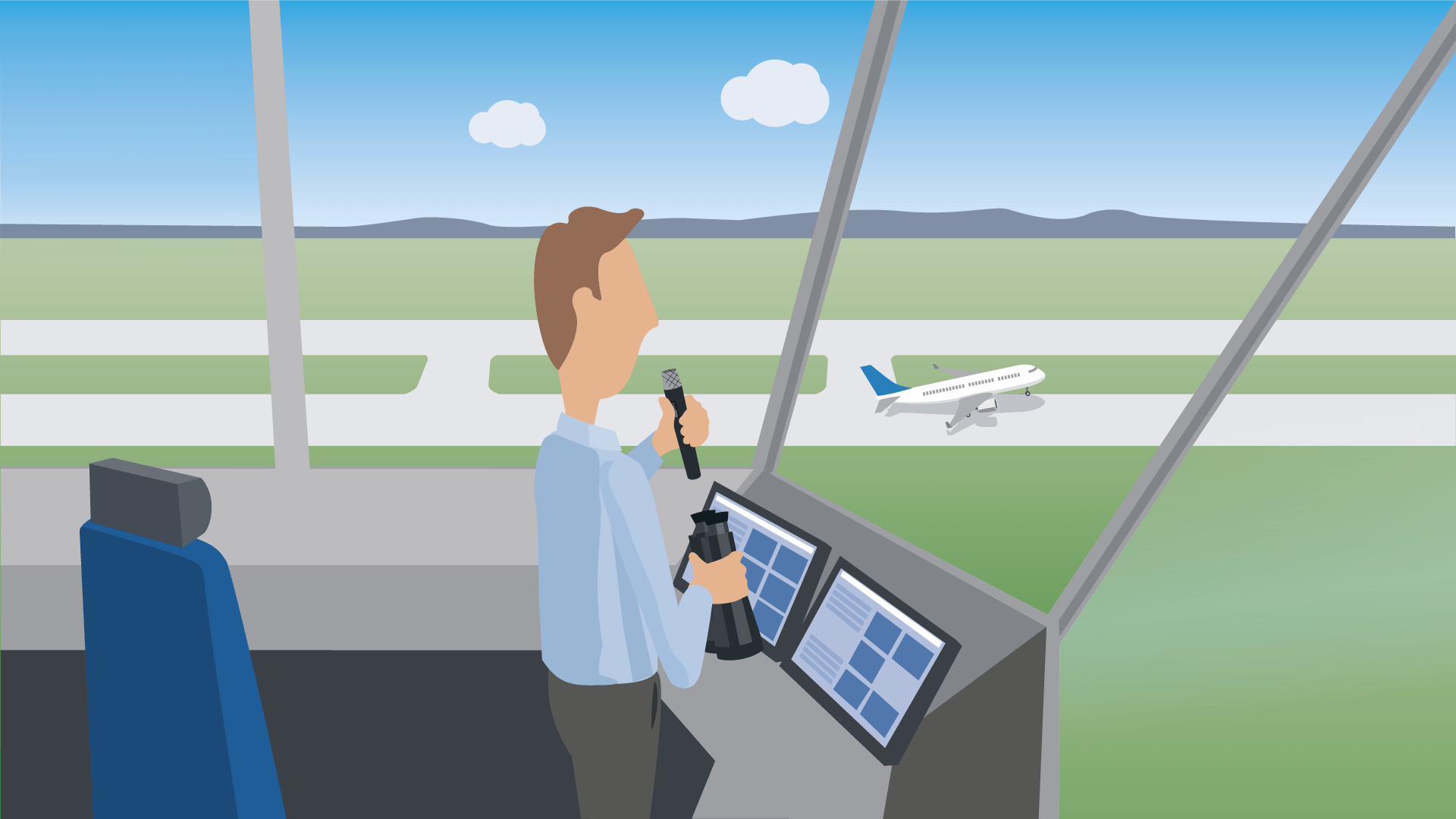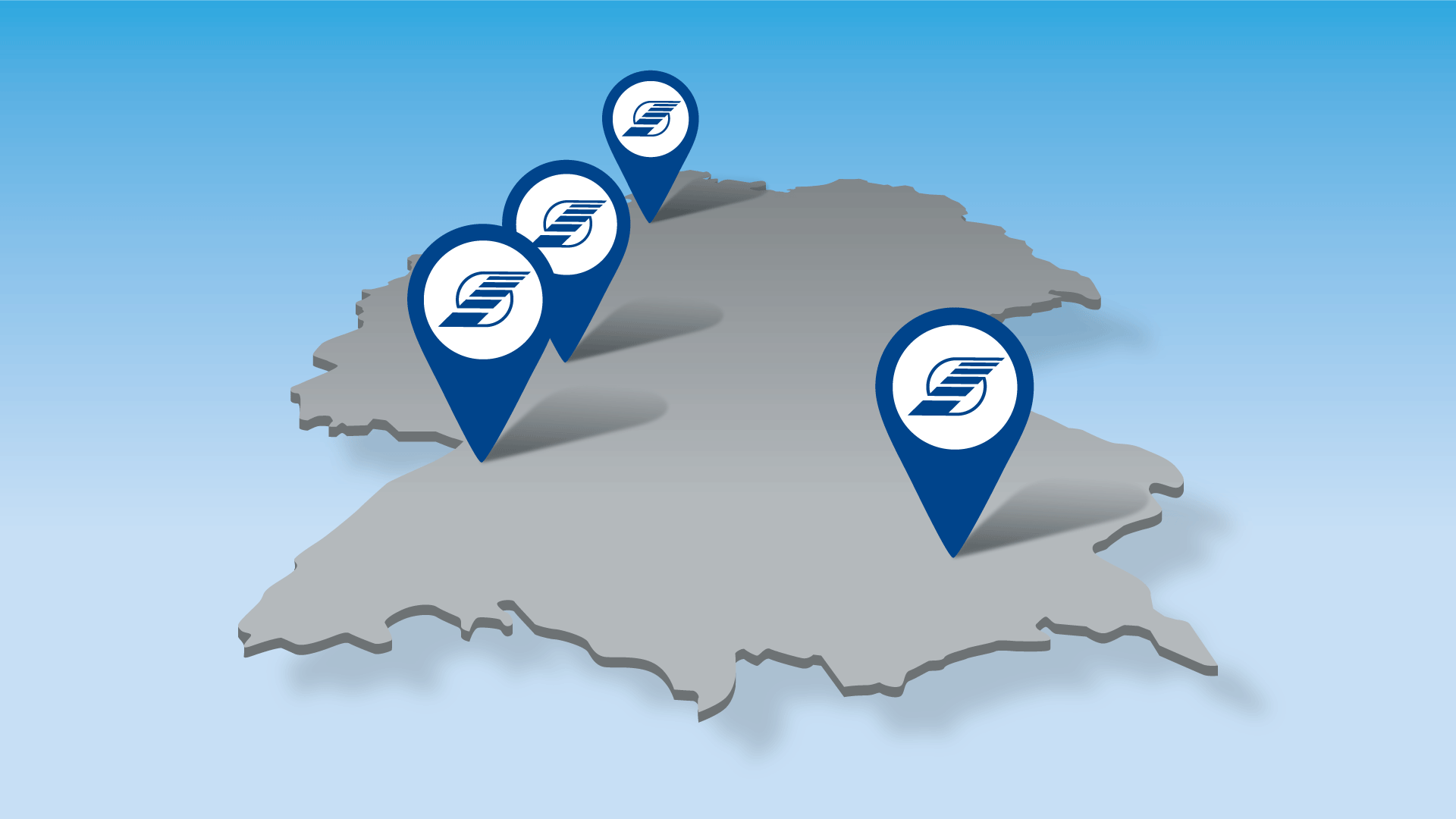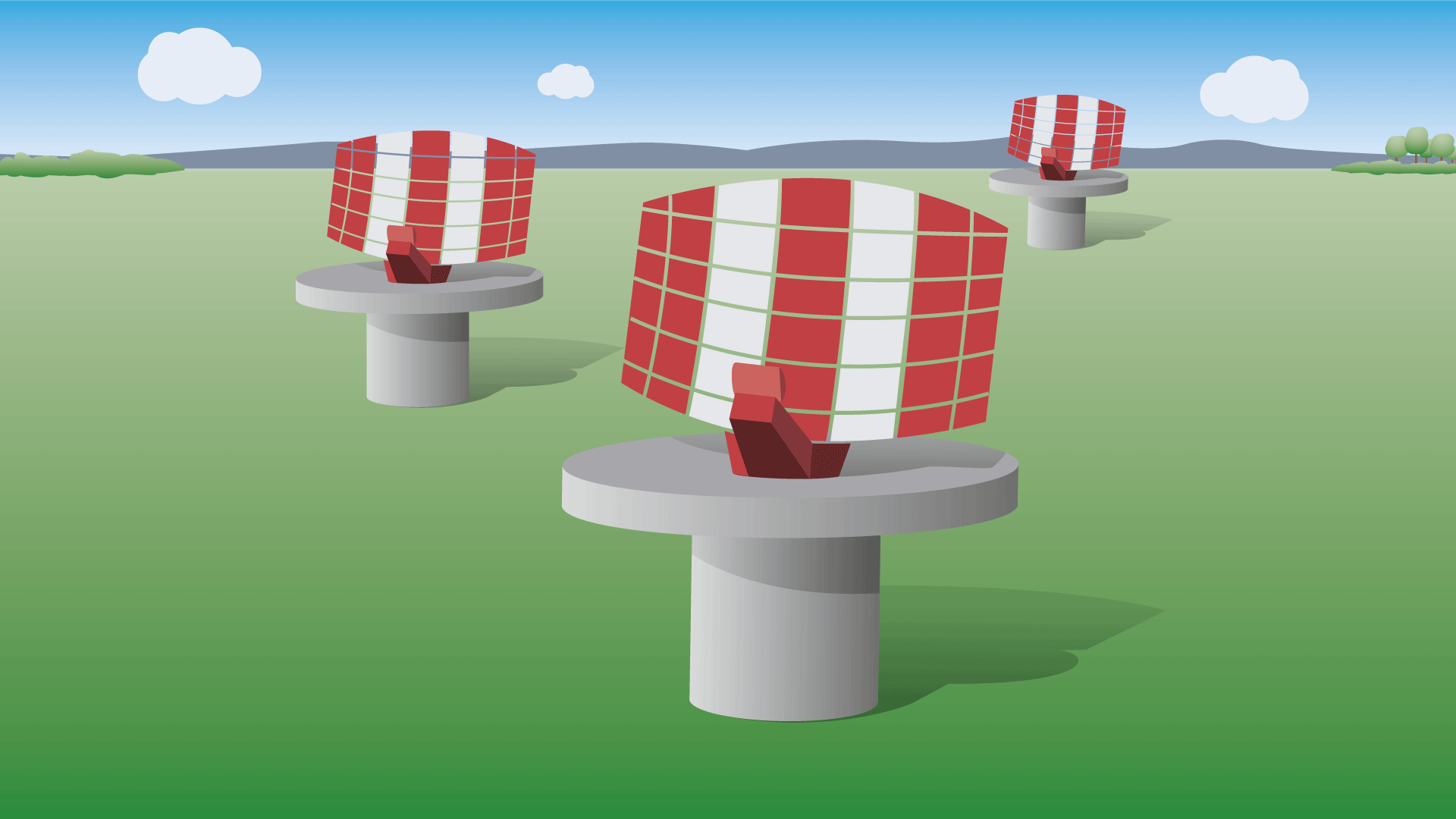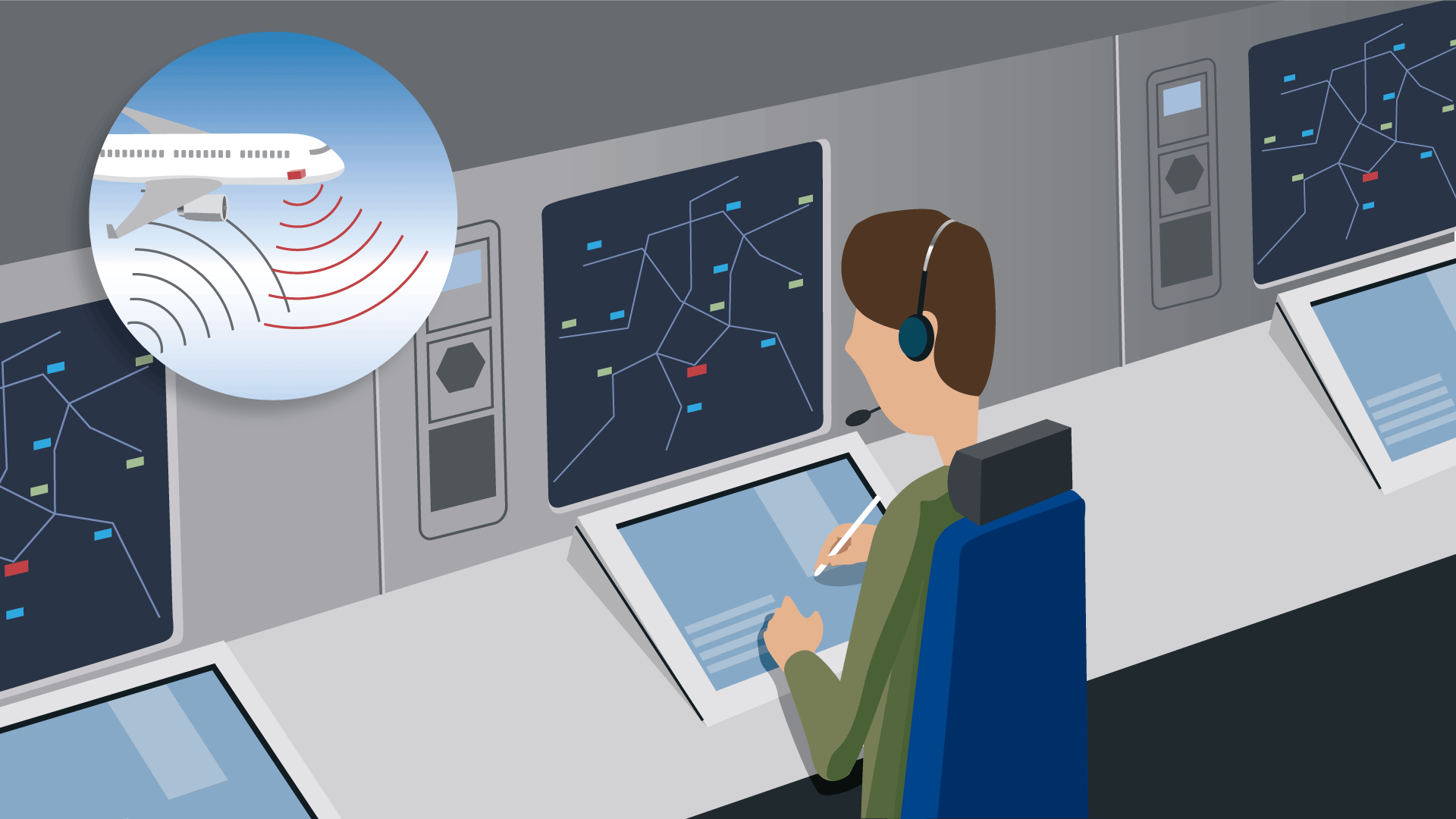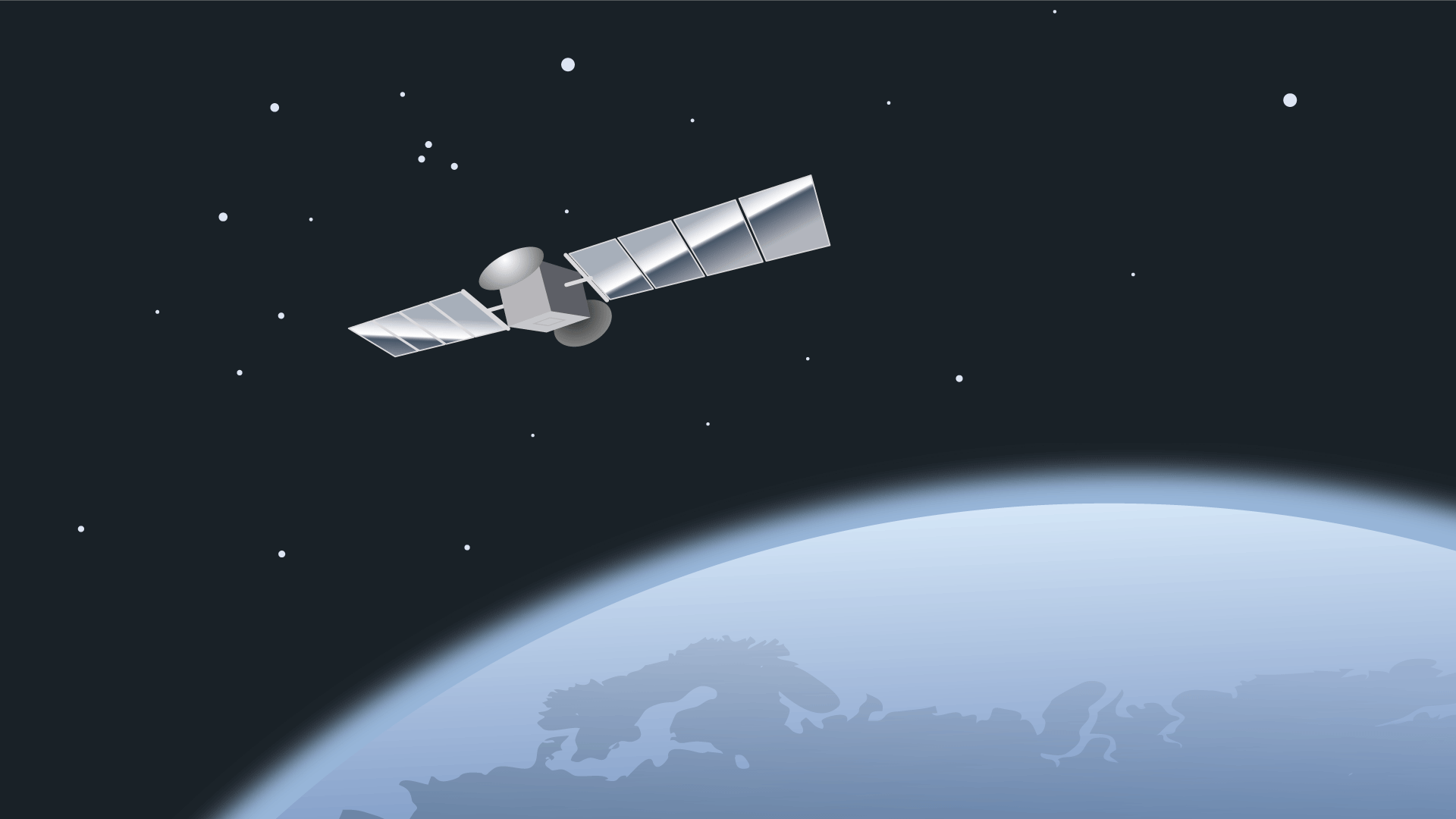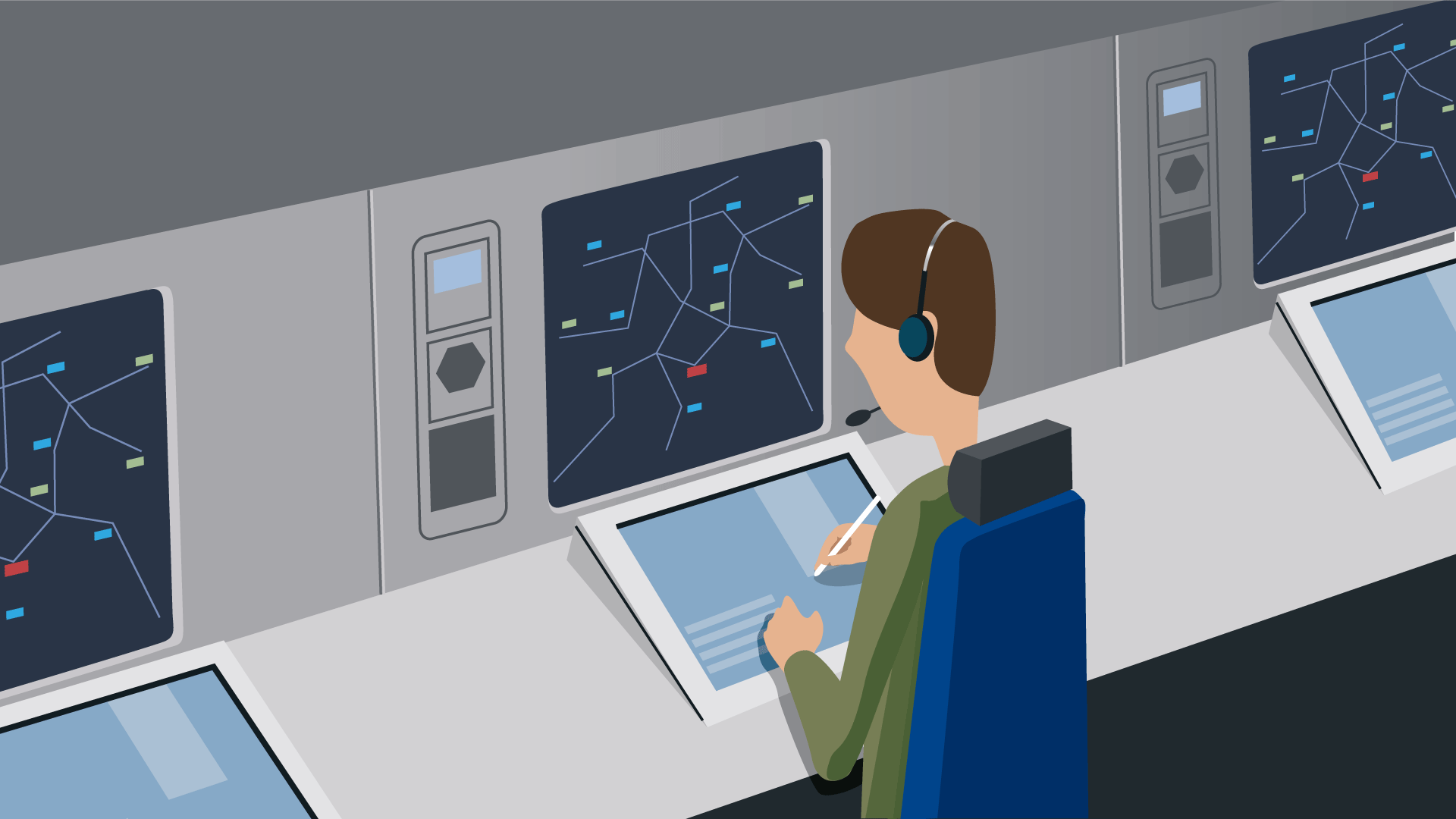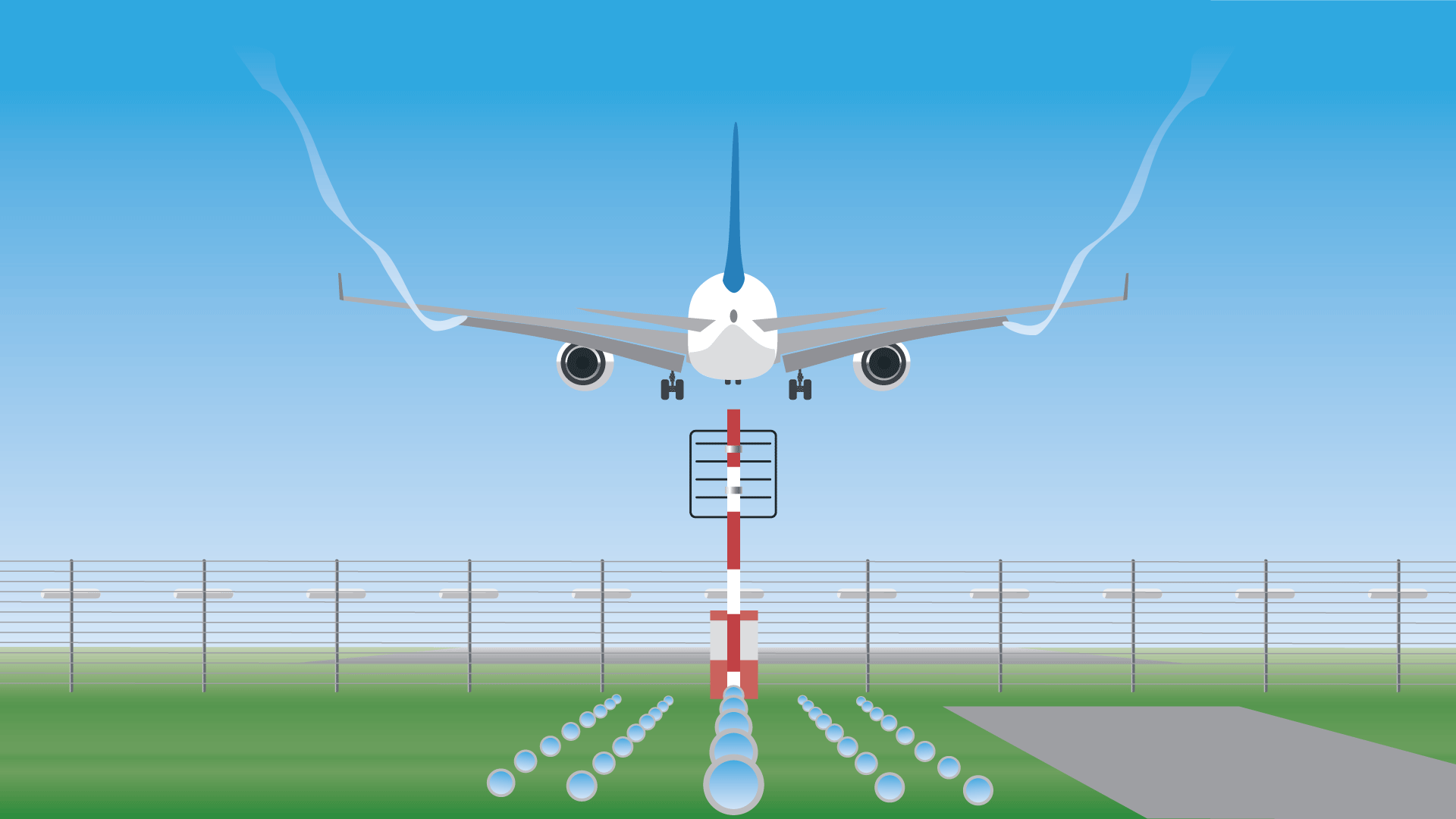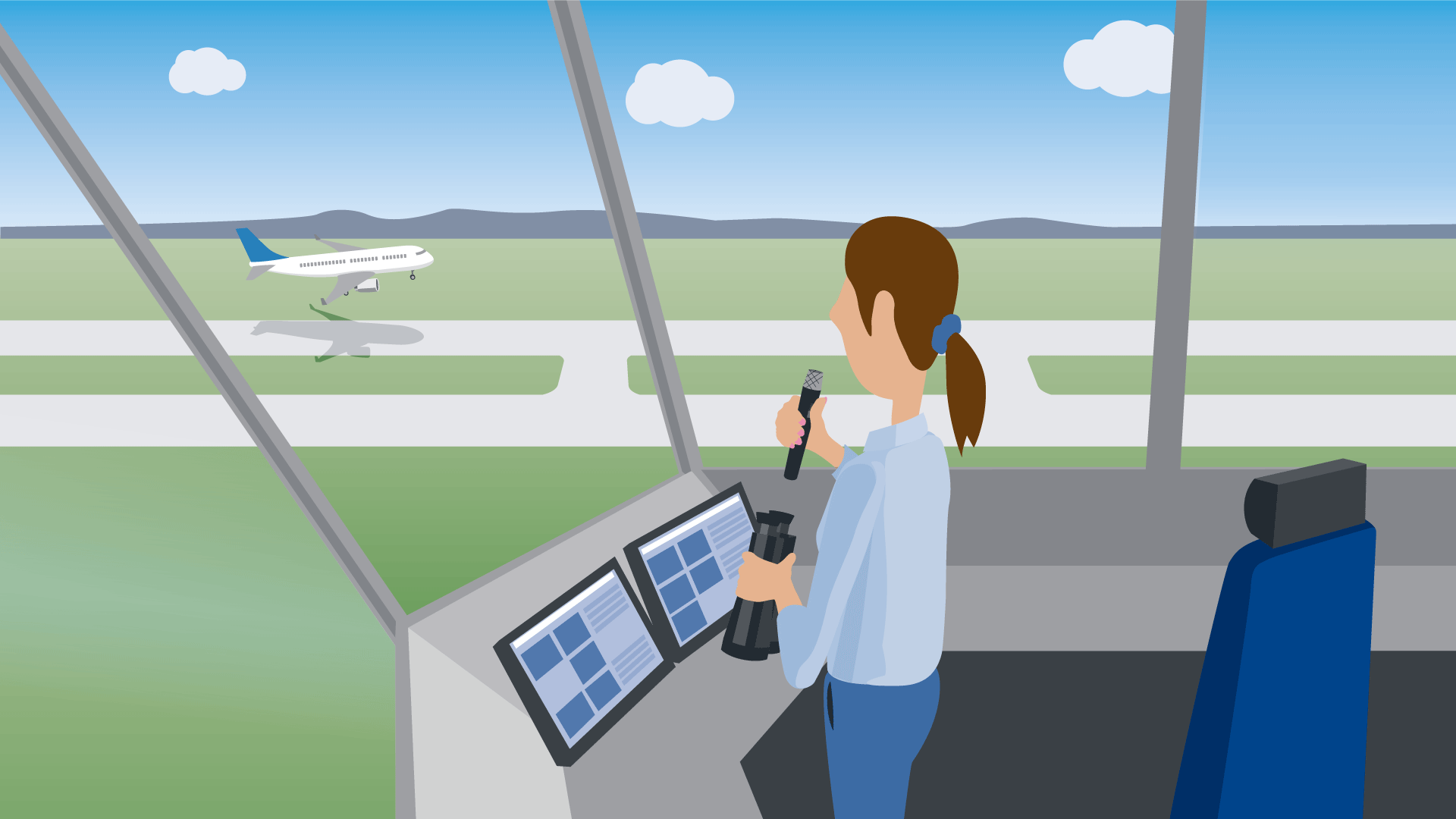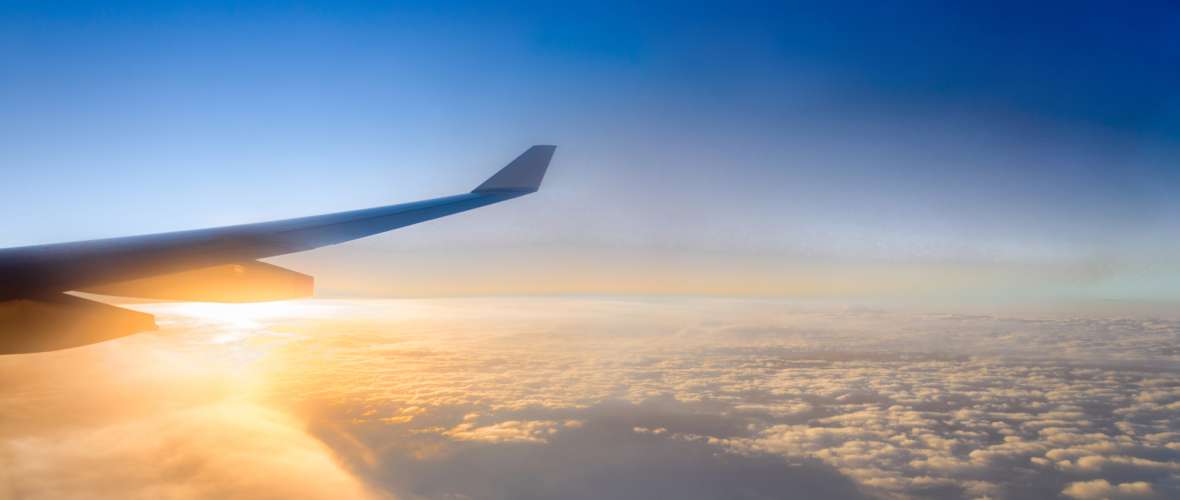

Welcome to DFS.
Many aircraft fly in the skies above Germany.
DFS takes care of these aircraft and makes sure they are safe.
DFS is the organisation in charge of air traffic control in Germany.
Air traffic control means:
We keep an eye on aircraft to make sure they fly safely.
We make sure there is always enough distance between aircraft.
This is the only way to ensure that aircraft fly safely.
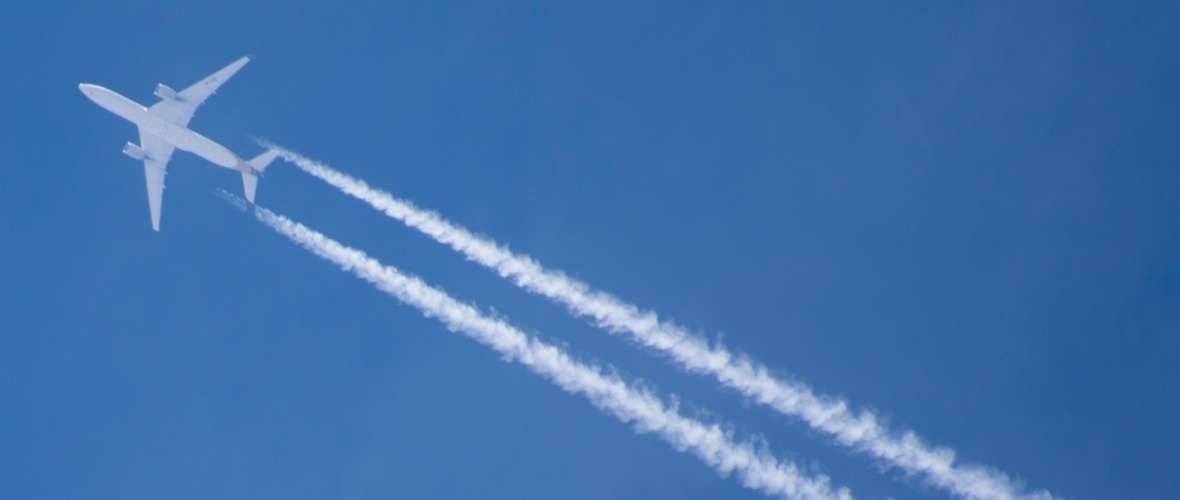
© Shutterstock
What does DFS do?
Many air traffic controllers work at DFS.
Being an air traffic controller is a very special job.
Air traffic controllers tell the pilots in the aircraft where they are allowed to fly.
Our air traffic controllers are located all over Germany.
Some of the air traffic controllers work at the 15 major airports in Germany.
They sit high up in control towers.
From up there, they can see the whole airport.
These air traffic controllers look after aircraft taking off and landing.
There are also other air traffic controllers who are not based at airports.
They work in a big room.
We call this room a control centre.
This is where air traffic controllers look after the aircraft in the sky.
DFS has four control centres.
They are located in Bremen, Karlsruhe, Langen and Munich.
When it is busy, our air traffic controllers have a lot to do.
They have to look after many thousands of flights.
Sometimes, this is more than 10,000.
In a single day.

© DFS
Who works at DFS?
More than 5,000 people work at DFS.
They have different jobs.
We have more than 2,000 air traffic controllers.
They keep an eye on aircraft.
On the aircraft that take off and land.
And on the aircraft that fly over Germany.
We have almost 1,000 technicians and engineers.
They take care of the technology that the air traffic controllers need for their work.
For example, air traffic controllers have to talk to pilots.
For that, they use a radio.
The radio converts speech into invisible signals.
The signals are transmitted through the air, just like a normal radio transmits speech and music.
Our technicians make sure that all this works.
There are other important jobs.
Some staff members take care of the computers at DFS.
Others plan the routes on which aircraft fly.
We also have our own school.
We train new air traffic controllers in this school.
They learn everything they need to know about air traffic control there.
The work of DFS is very important.
That is why DFS is a special company.
It is owned by the government.
How does air traffic control work?
You can see different aircraft in the sky.
Some aircraft are very big.
Many people can fly on them.
Other aircraft are very small.
The pilots often fly alone in these small aircraft.
Or only a few passengers fit inside them.
With small aircraft, it is like driving a car.
The pilots look out of the cockpit window during the flight.
That way they can see where they are going.
And they also see when something is in the way.
We call this flying under visual flight rules.
DFS helps pilots to prepare to fly and when they are in flight.
But pilots have to look after themselves and watch where they are going.
These rules would not work for bigger aircraft.
They are much faster than small aircraft.
That is why pilots do not look out of the cockpit window to see where they are going.
They look at the displays and instruments in the cockpit.
The displays and instruments show them where they are going.
And how high and how fast they are flying.
And much more.
That is why we say the pilots are flying under instrument flight rules. They are using the instruments to fly.
Our air traffic controllers look after these aircraft.
They tell the pilots where to fly.
This is why they are called air traffic controllers.
They use a radio device to do this.
When air traffic controllers speak on the radio, pilots hear them.
When pilots answer on the radio, air traffic controllers hear them.
This is how our air traffic controllers guide the aircraft safely to their destination.
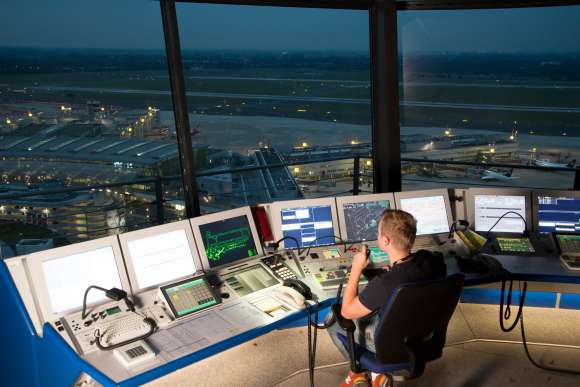
© Shutterstock
Air traffic controller in the control tower
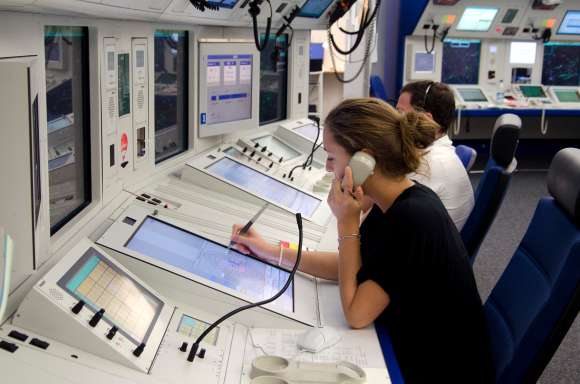
© DFS
Air traffic controllers in the control centre
Where do air traffic controllers work?
There are two types of air traffic controllers.
One type of air traffic controller is based at the airport, in a control tower.
The other type of air traffic controller sits in a control centre.
The air traffic controllers in the control tower sit high above the airport.
From there, they can see everything.
They can see the taxiways where the aircraft are moving on the ground, the runways and the surrounding area.
They talk to the pilots on their radios.
They tell them when they can take off or land.
They also look after the aircraft on the ground.
The air traffic controllers in the control centres do not see any real aircraft.
They sit in front of screens.
On these screens, aircraft are displayed as symbols.
Radar systems are used to display these symbols.
Radar facilities send out signals.
These signals are invisible.
When the signals hit an aircraft, they are reflected back.
Then the signals are picked up again by the radar facility.
We have many radar facilities.
They are located all over Germany.
This way, the air traffic controllers always know where the aircraft are.
The sky over Germany is very big.
That is why air traffic controllers in the control centres share their work.
Each air traffic controller looks after one part of the sky.
This means the sky is divided into many small pieces.
Just like a jigsaw puzzle.
We call these pieces sectors.
Each sector is controlled by a team of two air traffic controllers.
They help each other.
Because four eyes see more than two eyes.
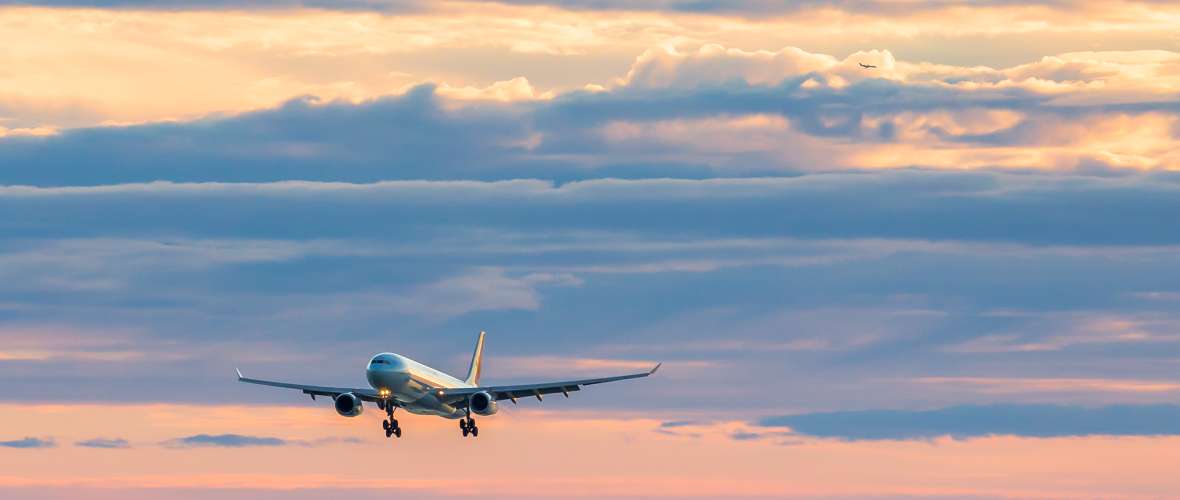
© Shutterstock
Safe, punctual, environmentally friendly and quiet
Air traffic controllers guide aircraft safely to their destination.
But that is not all.
Air traffic controllers also make sure that aircraft are on time.
And air traffic controllers have aircraft fly the shortest possible routes.
As a result, the aircraft consume less fuel.
That is good for the environment.
Air traffic controllers also try to minimise aircraft noise.
Because when an aircraft flies, it is very loud.
This bothers many people.
Air traffic controllers therefore do not let aircraft fly everywhere.
They guide them over places where not many people live.
